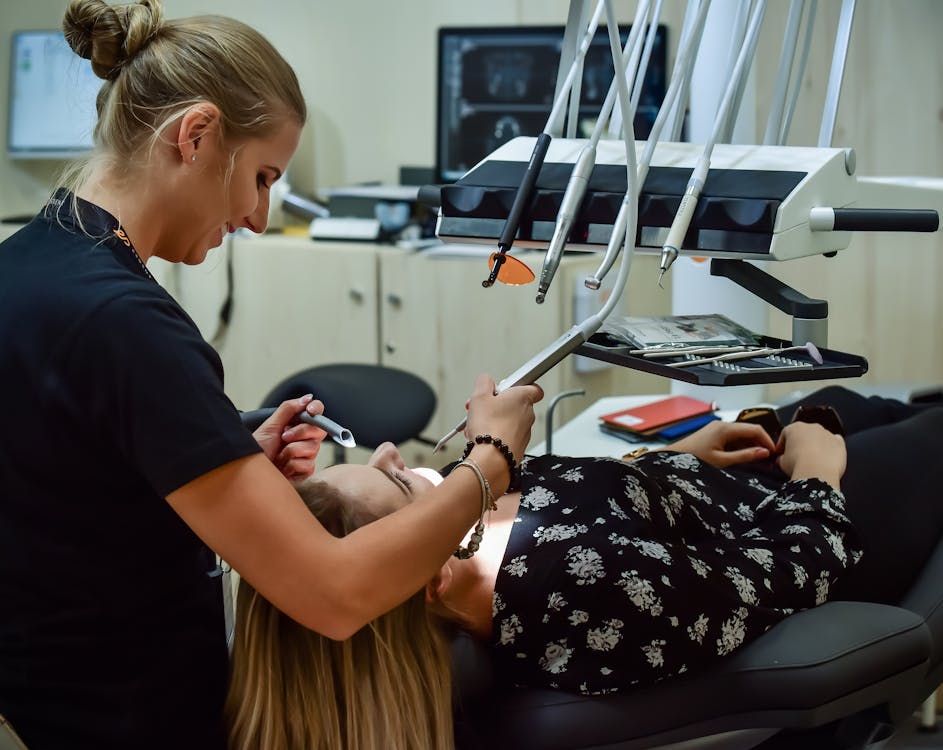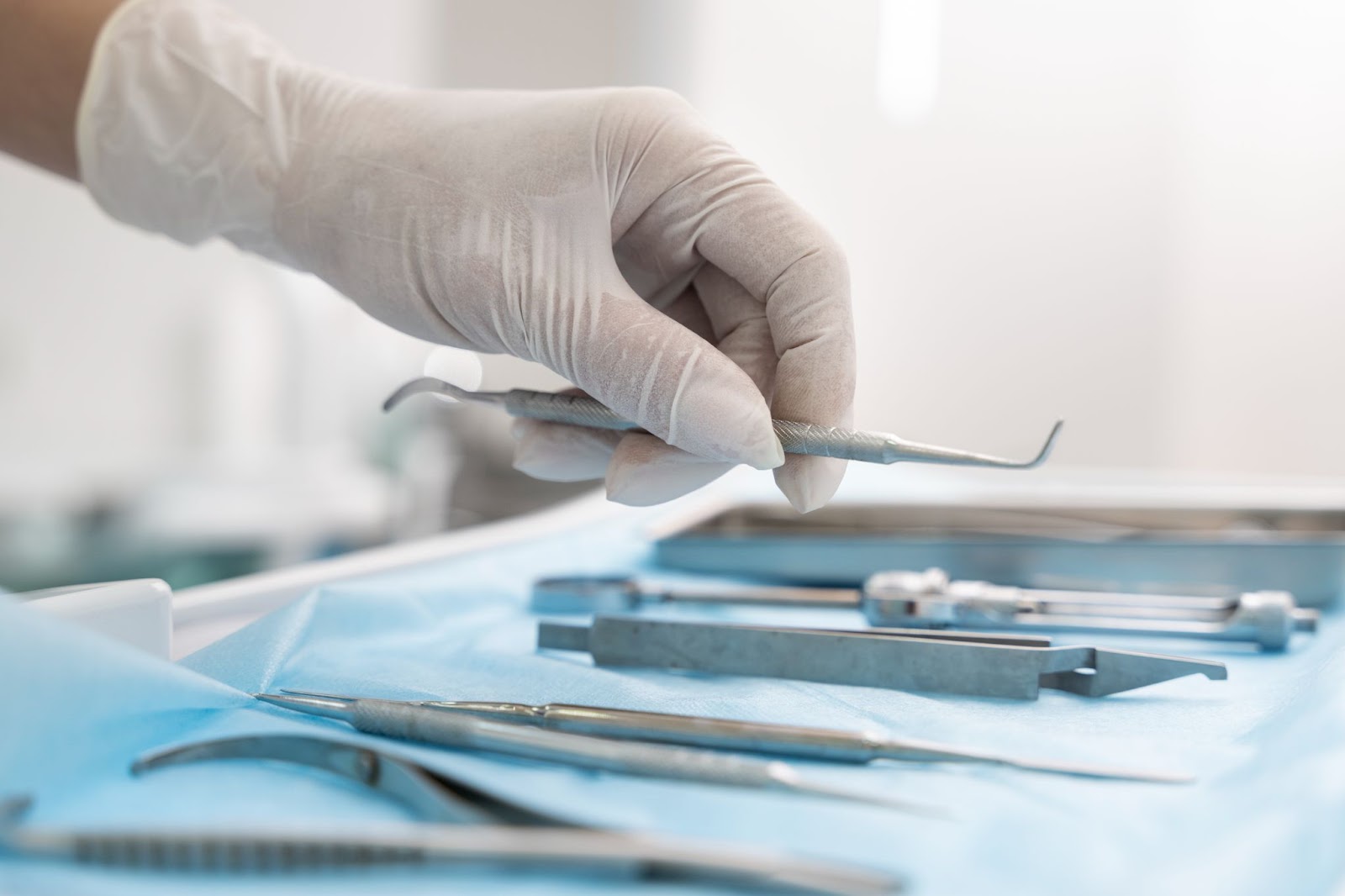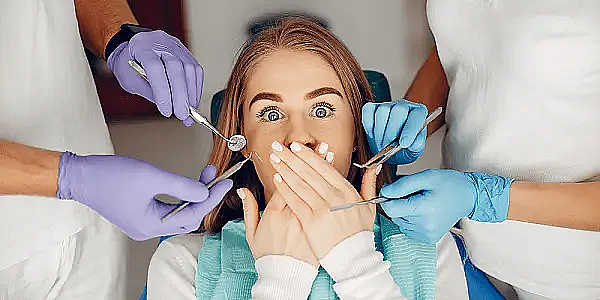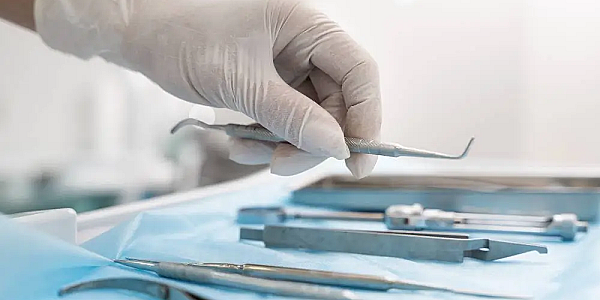Toothache - Causes, Types & Remedies for Toothache
Toothache is one of the most intense and difficult to ignore forms of discomfort felt in the oral cavity. Although often perceived as a trivial symptom, this pain can signal complex dental conditions – from deep cavities and dental pulp infections, to periodontal inflammation or local trauma. Ignoring it can lead to serious complications, which is why it is important to understand the causes, manifestations and available treatment options. In the following lines, we explore the main sources of toothache and what solutions exist to effectively prevent and treat this common, but not without consequences, problem.
What is toothache
Toothache is a clinical expression of a wide range of inflammatory, infectious, traumatic or functional conditions. It should not be considered an isolated symptom, but a biological signal that indicates profound imbalances in the homeostasis of the oral cavity.
Toothache - Types
Depending on intensity, duration and response to stimuli, dental pain is classified into reversible or irreversible, acute or chronic forms. Pulp pain can be provoked (cold, sweet, pressure) or spontaneous, with variable responses depending on the severity of the lesion.
Irreversible toothache
Irreversible toothache corresponds to severe pulpitis, characterized by tissue degeneration and irreversible vascular damage to the dental pulp. The patient experiences spontaneous, constant or intermittent pain of high intensity, which does not disappear when the triggering stimulus is removed and which often intensifies in the lying position.
Reversible toothache
Reversible pulp pain is generated by a low-intensity inflammation that superficially affects the pulp, without affecting the functional integrity of the neurovascular structure. Reversible pulpal pain occurs in response to thermal, osmotic or chemical stimuli. Clinically, the pain is short-lived and disappears immediately after the removal of the causative factor.
Chronic toothache
Chronic toothache is defined by the persistence of symptoms for more than three months, in the absence of an obvious acute lesion. Chronic pain may be a consequence of untreated chronic inflammation, latent periapical infection or residual post-traumatic or post-extraction nerve damage. The nature of the pain is often dull, diffuse, sometimes with burning or tingling components, without a clear relationship to an external stimulus.
Acute toothache
Acute toothache is a symptom with sudden onset, increased intensity and short duration, often being the first sign of pulpal or periodontal aggression. Acute toothache commonly occurs in the context of deep caries, dental fractures or incipient periapical infections. The pain tends to be accentuated by thermal or masticatory stimuli, with possible irradiation to the auricular, mandibular or temporal area. Frequently, the patient reports exacerbation of the pain during the night.
Common causes of toothache
Toothache can have multiple causes, involving either damage to the dental pulp or supporting tissues, or systemic factors that modify the local inflammatory response.
Dental caries
Dental caries is the progressive destructive process that affects enamel and dentin through the acidic action of bacteria in the oral biofilm. Initially, in the case of dental caries, the pain is caused only by thermal stimuli, but with pulpal damage, it becomes spontaneous and intense.
Dental abscess
A dental abscess is defined as a localized purulent collection, generated by infection of the endodontic space and bacterial dissemination in the periapical or periodontal region. Clinically, the patient presents with increasing toothache, often radiating, accompanied by edema, fever and sometimes trismus (inability to fully open the mouth).
Tooth Sensitivity
Dentin hypersensitivity is a transient painful condition caused by exposure of dentin to thermal, chemical or tactile stimuli. Dental pain is short-lived, sharp, well-localized and disappears immediately after the stimulus is removed.
Bruxism
Bruxism is a condition characterized by grinding or clenching of the teeth, most often at night, with psychosomatic and neuromuscular involvement. Repeated vascular compression causes pulpal ischemia, tissue hypoxia and the release of algogenic substances, which favor the occurrence of mild toothache.
Tooth Fractures
Tooth fracture refers to the disruption of the structural integrity of the enamel, dentin or, in severe cases, the dental pulp. Types of fractures vary from clinically invisible superficial cracks to complete corona-radicular fractures. Symptoms include pain on chewing, sensitivity to pressure or temperature variations, and in extensive fractures, throbbing, spontaneously occurring toothache.
Gingival retraction
Gingival retraction is the apical migration of the gingival margin, exposing the tooth root surfaces. Retraction exposes the dentinal tubules, which allow external stimuli to propagate to the dental pulp, causing transient pain, especially when cold or touched.
Periodontitis
Periodontitis is a chronic inflammatory disease of infectious nature that affects the periodontal ligament, alveolar bone, and root cementum. Pain occurs in moderate and advanced stages, when tooth mobility, active periodontal infection, and debris accumulation in periodontal pockets generate acute inflammation.
Can toothache be caused by drafts?
Cold air, especially when inhaled suddenly or directed at the face, causes a rapid decrease in temperature at the tooth surface. In the event of dentin exposure (caused by caries, gingival retraction, dental fissures or recent dental treatments), the thermal response can activate nociceptive receptors located inside the dentinal tubules, generating the sensation of pain. In the absence of a pre-existing dental condition, however, the draft cannot generate a dental pathology on its own.
Symptoms associated with toothache
Toothache can be accompanied by a series of signs and symptoms that reflect the severity and nature of the pathological process. Manifestations can vary depending on the type of damage: pulpal, periodontal, periapical or sinus. The intensity of the symptoms does not always correspond to the severity of the lesion, which is why clinical examination and imaging investigations are mandatory. Associated symptoms may include:
- sensitivity to cold, hot or sweet;
- swelling of the gums or face;
- fever (in case of infection);
- difficulty chewing.
Toothache in children
Toothache in children frequently occurs due to extensive caries, dental trauma or untreated periapical infections. The anatomical structure of temporary teeth (thin enamel and wide pulp chamber) favors the rapid progression of carious lesions. The child may exhibit agitation, refusal to eat, sleep disturbances or even fever. Objective signs include facial edema, pain to the touch and visible caries coronally.
Toothache during pregnancy
Physiological changes during pregnancy, especially hormonal and vascular ones, influence the gingival and pulpal response, increasing susceptibility to inflammation and tooth sensitivity. Gingivitis of pregnancy is common and can be complicated by gingival bleeding, edema and pain. Toothache during pregnancy requires careful evaluation and treatment, taking into account the safety of the fetus. The second trimester is considered the optimal period for dental interventions.
Toothache - When to see a doctor?
Any persistent toothache or accompanied by other signs of infection requires a dental consultation as soon as possible. Alarm signals include: pain that does not respond to analgesics, facial edema, fever, difficulty chewing, lymphadenopathy, purulent secretion or tooth discoloration. A specialist consultation can be scheduled by accessing the contact section.
Toothache - How is the diagnosis made?
Diagnosis of toothache requires a complex evaluation that integrates clinical symptoms with objective data obtained from investigations. The process includes:
- medical history analysis;
- thorough oral examination (including inspection of the oral cavity, palpation of the gums and mucous membranes, axial and transverse percussion of the teeth, testing of tooth mobility, as well as pulp sensitivity tests);
- radiographs or CT.
Differential diagnosis is essential to exclude other sources of orofacial pain, such as trigeminal neuralgia, maxillary sinusitis, otitis media or temporomandibular joint dysfunction. Only by correctly identifying the cause can effective treatment for toothache be established, thus preventing recurrences and complications.

Treatments and remedies for toothache
The treatment of toothache is determined according to the cause identified by clinical examination and imaging. The therapeutic approach should not only aim to reduce the symptom, but also to eliminate the etiological factor.
Analgesics
Analgesics are the first line of symptomatic treatment in toothache, by inhibiting the synthesis of prostaglandins involved in the inflammatory process. Nonsteroidal anti-inflammatory drugs can temporarily relieve pain by reducing intrapulpal edema and nociceptive pressure. In severe forms, opioid analgesics can be used, under strict medical supervision. Taking pills for toothache only temporarily suppresses the symptom, without treating the cause, which requires a dental consultation.
Endodontic treatment
Endodontic therapy is indicated in cases of irreversible pulpitis or pulp necrosis, with or without periapical infection. The procedure involves removing the pulp contents, disinfecting the root canals, and three-dimensional obturation of the endodontic space with biocompatible materials.
Dental crown
A dental crown is a prosthetic restoration indicated in cases of extensive coronal destruction caused by deep caries, fracture, or endodontic treatment. The crown protects the remaining tooth structure against occlusal forces and prevents bacteria from entering the interdental spaces.
Periodontal treatment
Periodontal treatment is necessary in case of tooth pain caused by gingival inflammation or chronic periodontal disease. Procedures include supra- and subgingival scaling, periodontal curettage, local application of antimicrobial agents, and, in advanced cases, regenerative periodontal surgery.
Tooth extraction
Extraction is indicated in situations where the tooth can no longer be saved by conservative or endodontic treatment. Indications include root fractures, severe tooth mobility, recurrent abscesses, or complete coronal destruction.

Natural remedies for toothache - How effective are they?
Natural remedies can temporarily improve symptoms, but they cannot treat the cause of toothache. Their exclusive use, in the absence of specialized treatment, favors the progression of the pathology and the appearance of complications. Commonly, natural remedies for toothache include:
- rinsing the mouth with warm water and salt;
- clove oil;
- applying cold compresses;
- chamomile tea;
- sage decoction.
Toothache - Prevention methods
Prevention of toothache involves the constant implementation of hygienic, dietary and therapeutic measures, which can reduce the risk of pulpal or periodontal inflammation. Among other things, to avoid pathologies that can trigger toothache, it is recommended:
- correct tooth brushing twice a day, with fluoride toothpaste;
- use of dental floss to clean the interdental spaces;
- professional scaling at 6-month intervals;
- sealing of occlusal grooves in permanent teeth;
- reducing the consumption of sugars and acidic drinks;
- using an occlusal guard (in case of diagnosed bruxism);
- periodic dental examination for early identification of lesions.
Untreated toothache - Risks and complications
Neglecting a toothache can have severe, local and systemic consequences. The evolution of the pathology without treatment leads to progressive, sometimes irreversible complications, with a major impact on overall health. An apparently minor pain can signal an active infection with the potential to spread. The risks and complications associated with ignoring toothache:
- dental abscess with risk of extension into the facial or cervical soft tissues;
- alveolar osteitis or mandibular osteomyelitis;
- oropharyngeal phlegmon with possible respiratory involvement;
- maxillary sinusitis of dental origin, in the case of upper molars;
- periapical cyst or apical granuloma with chronic bone involvement;
- irretrievable tooth loss and migration of surrounding teeth;
- systemic complications (very rare): bacterial endocarditis, septicemia;
- chronic discomfort, insomnia, feeding difficulties and weight loss.
Photo source: Freepik, Pexels
Bibliografie:
https://my.clevelandclinic.org/health/diseases/10957-toothache
https://www.nhs.uk/conditions/toothache/
https://www.healthline.com/health/dental-and-oral-health/home-remedies-for-toothache
https://pmc.ncbi.nlm.nih.gov/articles/PMC4590084
https://pmc.ncbi.nlm.nih.gov/articles/PMC6535452
https://jada.ada.org/article/S0002-8177%2823%2900390-2/fulltext
https://www.sciencedirect.com/science/article/pii/S0020653920327866
https://www.academia.edu/122746486/Management_of_complications_of_odontogenic_maxillary_sinusitis
https://jdapm.org/DOIx.php?id=10.17245%2Fjdapm.2016.16.1.1
https://onlinelibrary.wiley.com/doi/10.1111/ors.12481
https://www.researchgate.net/publication/258314161_Dental_pain
https://www.verywellhealth.com/tooth-abscess-8661242
https://www.healthline.com/health/dental-and-oral-health/home-remedies-for-toothache
Frequently asked questions about toothache

Dr. Nicoleta Taran answers questions:


